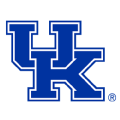The one-and-done era has been with us for so long in men's college basketball, it's hard to remember any other recruiting era.
It has been 18 years now since the NBA changed its eligibility rules to require, in effect, that prospects spend at least one season after high school playing college basketball before entering the draft. Beginning with the class of 2006, which included the likes of Kevin Durant and Greg Oden, we've now seen a total of 1,800 top-100 players make similar decisions.
What would it look like, we wondered, if we ranked the best recruiting programs over that entire 18-year span? The short answer is there are no surprises at the top of these rankings. On the other hand, it's instructive to measure just how unmistakably the top two programs have separated themselves from the rest of Division I in this one respect.
Of course, there's a case to be made that the very term "recruiting" has taken on an entirely new and more expansive meaning in the transfer portal era. Many programs now declare an affirmative preference for older and more experienced players who transfer in after one or more seasons in college. Nevertheless, there's still descriptive value to be gained by measuring the extent to which programs rely on (or aim for) signing top-100 players straight out of high school.
To measure this reliance, we'll use the "recruiting points" metric developed by Drew Cannon over a decade ago. Cannon has worked as an analytics staffer for the Boston Celtics since 2013. Prior to that, he came up with a sliding 1-10 scale for men's college basketball recruits that is heavily and appropriately skewed toward the very top of the top 100 high school player rankings.
At a glance, the No. 1 player in the nation is a 10-point signing, while the No. 100 player nets out to one point. But the scale is decidedly front-loaded: No. 10 is equivalent to seven points, No. 25 is five and No. 50 is just three. Cannon's scale tracks quite well with what we know from experience regarding how well top-100 players perform in their first D-I season. While recruiting evaluations are far from perfect and surprises occur all the time, players at the highest reaches of the top 100 rankings do tend to have the most productive college basketball seasons.
With that in mind, here are the top 20 recruiting programs of the one-and-done era.

1. Kentucky Wildcats
485 points
Tubby Smith landed Kentucky's first elite prospect of the one-and-done era when he signed Patrick Patterson in the recruiting class of 2007. Then John Calipari arrived in Lexington in 2009, and what had been a trickle became an absolute flood of talent suiting up annually for the Wildcats.
The entire population of elite recruits that has signed with UK under Calipari is too numerous to catalog comprehensively here, but just to cite a few prominent names in sequence: John Wall, DeMarcus Cousins, Brandon Knight, Anthony Davis, Michael Kidd-Gilchrist, Marquis Teague, Nerlens Noel, Julius Randle, James Young, Devin Booker, Karl-Anthony Towns, Trey Lyles, Tyler Ulis, Jamal Murray, De'Aaron Fox, Malik Monk, Bam Adebayo, Shai Gilgeous-Alexander, Tyler Herro, P.J. Washington, Tyrese Maxey, TyTy Washington Jr., and Cason Wallace. That'll do.
Whether by choice or happenstance, Kentucky initially came out of the pandemic being more active in the transfer portal than depending on its normal cycle of straight-from-high-school talent hauls. With his current complement of first-year players, however, Calipari once again has the No. 1 class in the nation.

